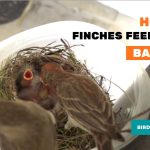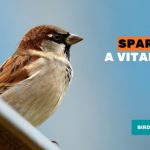Finches also known as fairy-wrens are small, brightly colored birds that are native to Australia. These birds are known for their elaborate courtship displays, active and sociable nature, and their unique parenting style. Finches are unique among birds in that both male and female birds take turns incubating the eggs and caring for the chicks, making them true co-parents.
However, caring for their young requires a lot of effort and attention, especially when it comes to feeding the hungry chicks. In this article, we will explore “how finches feed their babies”, using their beaks, feet, and tails to ensure that the chicks are well-fed and able to grow and develop into strong, healthy birds.
Contents
Feeding Fledglings: How Finches Nourish Their Offspring?
This is about the Australian Native bird Finches where male and female work together to feed their young, using their beaks to collect insects and other small prey, regurgitating partially digested food directly into the chicks’ beaks, and some species having a softbill to feed the chicks soft foods such as nectar and fruit. Finches also provide a varied diet of insects, seeds, and other foods to ensure their chicks receive all the necessary nutrients for growth and development.
Beak-Collecting and Precise Feeding
Finches skillfully use their beaks to collect insects and small prey, which they deliver to their chicks with utmost precision. This intricate process requires practice, allowing finches to provide nourishment to their young with ease.
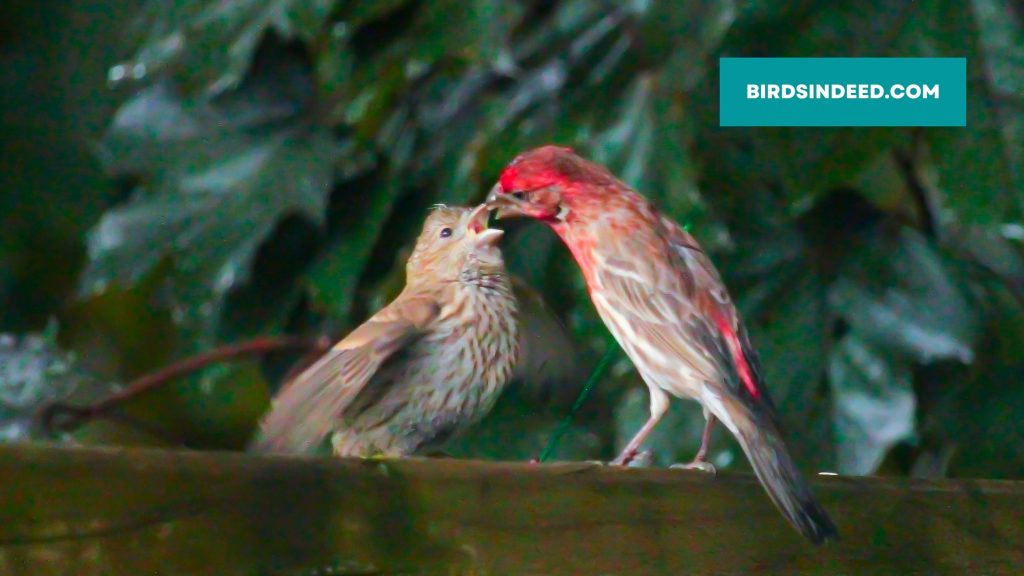
Additionally, this skillful foraging behavior not only showcases the finches’ adaptability but also reflects their parental dedication. The parents tirelessly search for suitable food sources, carefully plucking insects from plants and other surfaces, ensuring their chicks receive a balanced and nutritious diet. Watching the adult finches in action is a testament to their expertise and commitment to the well-being of their offspring.
As the chicks eagerly await their meals, the parents carry out this delicate feeding ritual, fostering a strong bond between them and their young. Through this nurturing process, finches play a crucial role in the development and survival of their fledglings, providing them with the best possible start in life.
Regurgitation for Nutrient-Rich Meals
One common feeding method among birds is regurgitation, and finches are no exception. They feed their chicks partially digested food directly into their beaks, ensuring they receive the essential nutrients needed for growth and development.
Feeding on the Move
Despite the challenges, finches are known to feed their chicks while in flight. Their skilled flying abilities allow them to balance the needs of their young with their own safety and mobility, ensuring a constant supply of food.
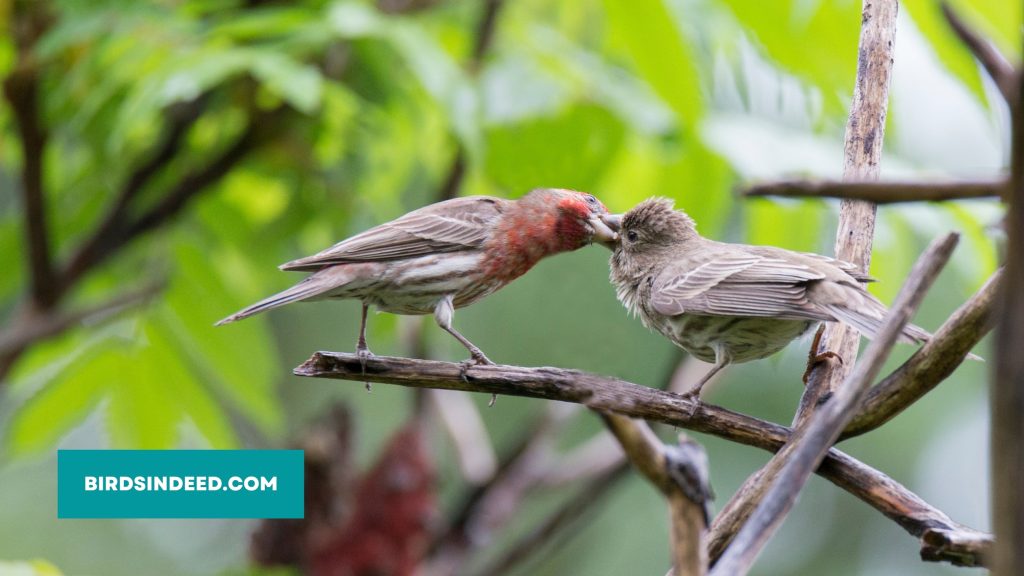
Varied Diet for Optimal Development
Finch parents provide a varied diet, including insects, seeds, and other foods, to ensure their chicks receive all the necessary nutrients for robust and healthy development. This diverse diet plays a crucial role in their offspring’s growth and overall well-being.
What Parent finches feed their babies?
Finches should feed their young nectar, fruit, and sprouted or finely ground seeds. The parents work together to provide a varied diet, ensuring that the chicks receive all the necessary nutrients for healthy growth. The male and female Finches will also continue to feed their young until they are old enough to fend for themselves and leave the nest.
However, once the eggs have hatched, a heartwarming scene unfolds in the nest as the father finch takes on an essential role in nurturing his young. With a beak filled with meticulously mashed seeds, he approaches his hungry offspring with tenderness. Understanding that their delicate beaks are not yet strong enough for hard meals, he thoughtfully provides them with a variety of mashed veggies, carefully selecting thistle, weed, and sunflower seeds to satisfy their fledgling appetites.
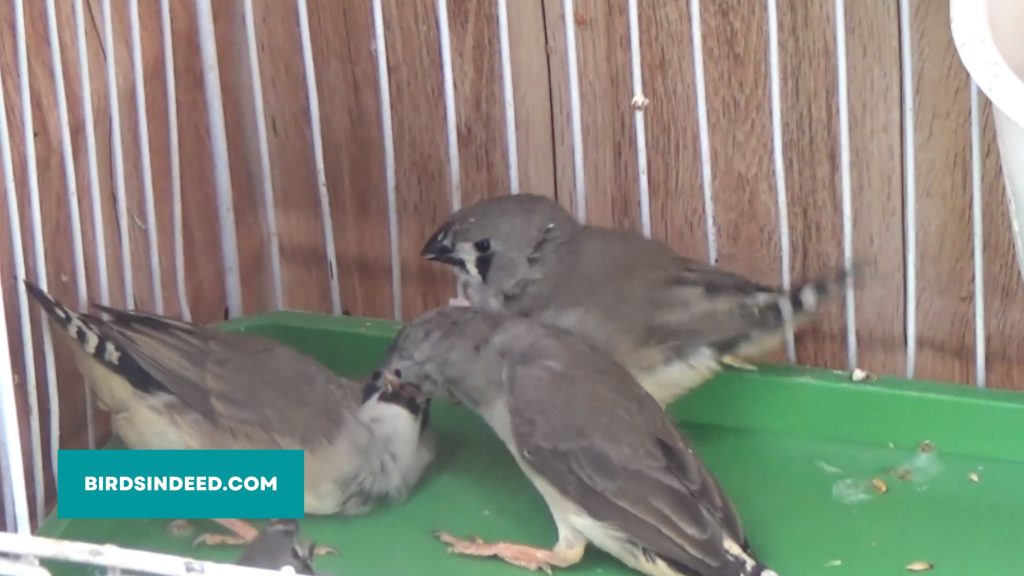
In this charming display of paternal care, the father finch proves to be an indispensable source of nourishment, ensuring his young finches thrive during their early days of life.
It is important to note that each species of finch may have slightly different feeding habits and requirements. For example, some species of finch have a softbill that allows them to feed their young soft foods such as nectar and fruit, while others have a more typical beak for catching insects and seeds.
To ensure the best care for baby finches, it is important to research the specific dietary needs of the species you are caring for, and to consult a veterinarian or avian specialist for additional guidance. Here is an example of a table that outlines common foods fed to baby finches:
| Food Type | Description |
| Insects | Small insects such as flies, moths, and beetles provide high-quality protein and fat. |
| Nectar | Sweet, sugary nectar from flowers is a good source of energy for baby finches. |
| Fruit | Soft fruit such as bananas, papayas, and grapes can provide added vitamins and minerals. |
| Seeds | Sprouted or finely ground seeds can provide essential vitamins, minerals, and carbohydrates. |
| Egg food | Commercial egg food mixtures can provide a complete diet for baby finches, but should be offered in addition to other foods and not as a sole source of nutrition. |
How often do finches feed their babies?
The frequency of feeding baby finches varies depending on the species and their age. Generally, parent finches feed their chicks multiple times an hour, especially during the early stages of the chicks’ lives when they are very young and require constant nourishment. Some finches feed their babies 1-2 hours later, and some 2-3 hours later.
As the chicks grow older and become more independent, the feeding frequency may decrease. However, during the peak of their growth and development, finch parents remain actively involved, ensuring their offspring receive sufficient food for optimal growth and health.
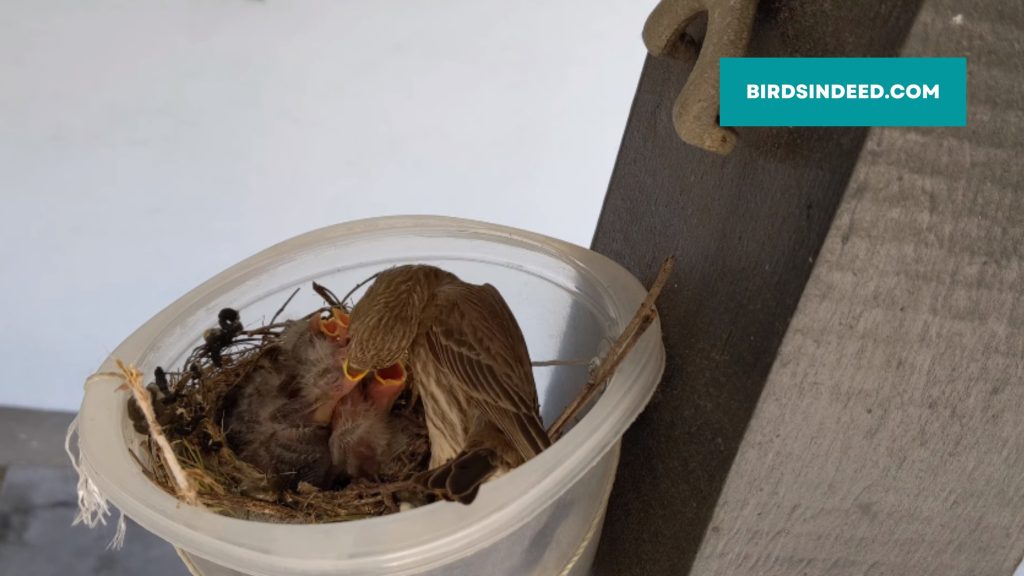
That’s all folks!
In conclusion, the feeding habits of finches can vary greatly based on species, age, and other factors. It is important for bird owners and caretakers to understand the specific dietary needs of the finches they are caring for in order to provide them with the best possible nutrition. By researching the feeding habits of different finch species, consulting with a veterinarian or avian specialist, and observing the feeding habits of the parents, bird owners can help ensure that their finches receive all the necessary nutrients for healthy growth and development.
Frequently Asked Questions- FAQs
How do finch parents feed their babies?
Finch parents feed their babies by regurgitating partially digested food directly into their chicks' beaks. This process provides the essential nutrients the young finches need for their growth and development.
Do all finch species use the same feeding method for their chicks?
While many finch species feed their chicks through regurgitation, some species with soft bills may also feed their offspring soft foods like nectar and fruit. These energy-rich food sources are vital for the growing chicks' needs
How often should finches be fed?
Finches should be fed regularly throughout the day to ensure that they have access to food at all times. The frequency of feeding will depend on the specific needs of the finches and can be determined with the help of a veterinarian or avian specialist.
Is it okay to feed finches only seeds?
While seeds can be a staple of a finch's diet, it is important for them to receive a variety of foods to meet their nutritional needs. Offering a balanced diet of seeds, fruit, insects, and nectar can help ensure that finches receive all the necessary nutrients.
Kazi Rifat is the Editor & Author at Birds Indeed, a blog dedicated to all things avian. With a passion for birds and a background in Computer Science, Kazi brings a unique perspective to the world of bird watching and conservation. Follow along on his feathery adventures and learn something new every day.


